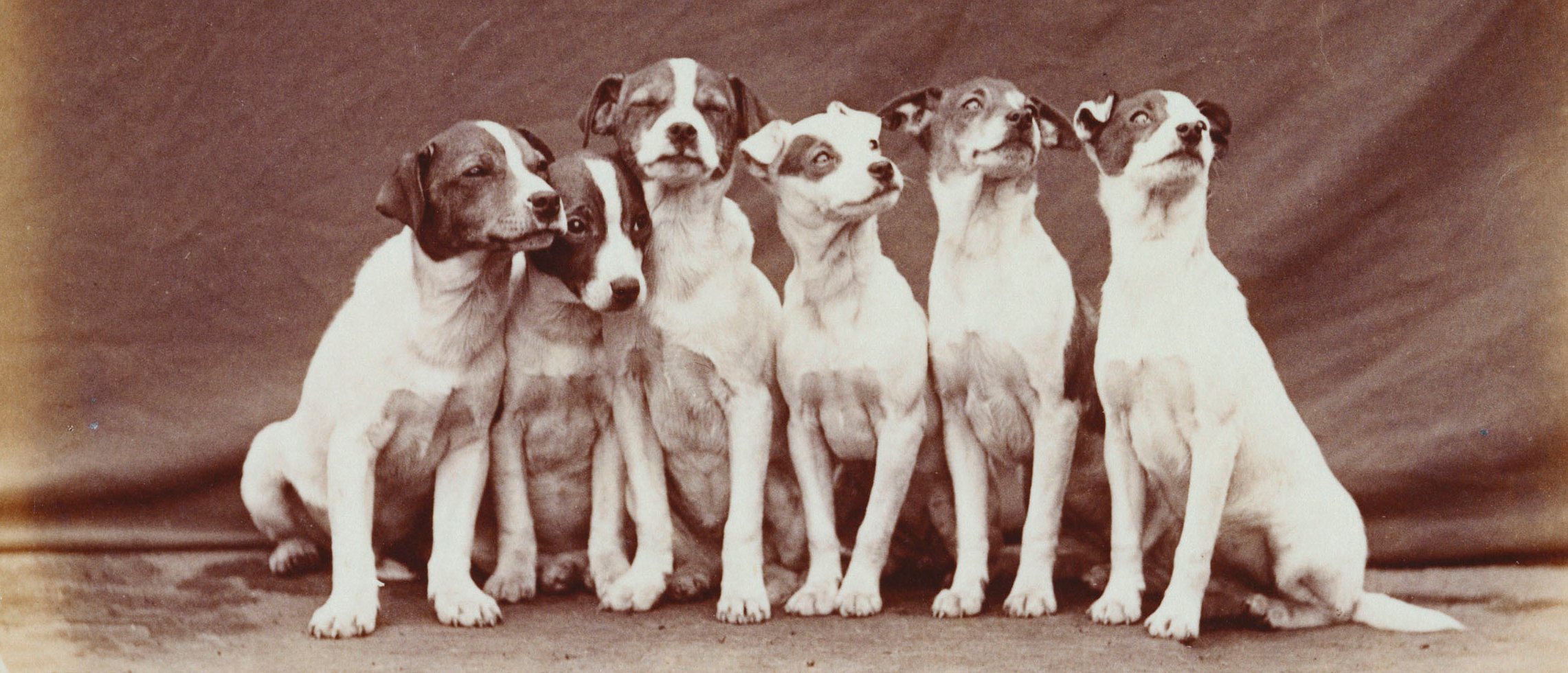Royal Pets
Beloved animals through the years

Queen Elizabeth II was well known for her love of dogs, and corgis have become an internationally recognised symbol of her reign. This follows a long tradition of the royal family keeping dogs for their companionship and unquestioning loyalty, setting a precedent for Britain to become a nation of animal lovers. In the seventeenth century Charles I made popular the King Charles spaniel, several of which feature in court portraits by Sir Anthony van Dyck. It was Queen Victoria and Prince Albert however who first documented their large collection of domestic dogs, with Sir Edwin Landseer commissioned to paint their favourite pets including Dash, the spaniel who was Queen Victoria's childhood companion and Eos, the greyhound who accompanied Prince Albert from Germany.
Throughout her long reign Queen Victoria favoured a number of different breeds including dachshunds, collies and pugs. King Edward VII was particularly fond of terriers, with several including Jack and Caesar becoming known to the public as favourites of the King. His son King George V continued the tradition of keeping terriers, as well as taking an interest in working dogs such as Labradors. The first corgis joined the royal family in 1933 when the Duke of York, later King George VI, acquired two for his daughters Princess Elizabeth and Princess Margaret. Queen Elizabeth II owned many corgis including Susan, who was an eighteenth birthday present and from whom all future royal corgis have been descended.
As well as keeping dogs as personal pets, the royal family are established breeders. The royal kennels were built in the early 1840s in Windsor Home Park and housed up to a hundred dogs. Queen Victoria evidently took pride in the pedigree of her dogs, showing six of her Pomeranians in the first Crufts dog show in 1891. Breeding programs continued at Windsor, and later at Sandringham, during the nineteenth and twentieth centuries with each dog registered with the Kennel Club. Queen Elizabeth II was one of the longest-established breeders of Pembroke corgis in the world.
The royal family have always been supporters of animal welfare. At a time when tail docking and ear cropping was common, Queen Victoria banned the practice in the royal kennels. Her patronage gave the Royal Society for the Prevention of Cruelty to Animals (RSPCA) the name it is known by today. In 1885 Queen Victoria became the first royal patron of Battersea Dogs Home, and her son Prince Leopold became the first member of the royal family to adopt from the home when he rehoused a terrier called Skippy. Battersea Dogs Home has remained under royal patronage ever since with HRH The Duchess of Cornwall the current patron.
A large number of works of art in the Royal Collection depict the favourite pets of monarchs and their families. As well as painting portraits of Queen Victoria and Prince Albert's favourite dogs, Sir Edwin Landseer incorporated a number of their pets into his acclaimed painting Windsor Castle in Modern Times. King Edward VII commissioned Fabergé to make exquisite models of a number of his dogs including Caesar, who is shown wearing an enamelled collar inscribed 'I belong to the King'.
It is photography however which has provided the greatest insight into the royal family's love of dogs. In 1854 Queen Victoria commissioned William Bambridge to systematically photograph the dogs in the Windsor kennels, a project which continued until the end of the queen's reign. Formal portraits continued to be commissioned but in the twentieth century the most compelling photographs of royal pets were taken by their owners. King George VI, a keen amateur photographer, took many charming photographs of his young daughters playing with the family's dogs.
Learn more about the Royal Familiy's pets by clicking on the items below:




